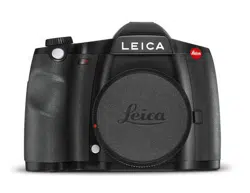Loading ...
Loading ...
Loading ...

EN
5
Safety remarks
be used for cleaning. Some chemicals and liquids can damage the
camera housing or the surface finish.
• Rubber and plastics are known to expel aggressive chemicals and
should therefore not be kept in contact with the camera for extended
periods of time.
• Prevent any sand or dust or water penetration into the camera, e.g.
during snowfall or rain or on the beach. Be extra careful when changing
the lens (in system cameras) and when inserting or removing the
memory card and rechargeable battery. Sand and dust can damage the
camera, the lens, the memory card and the battery. Moisture can
cause malfunctions and irreparable damage to the camera and memory
card.
LENS
• A camera lens can have the effect of a magnifying glass when exposed
to direct frontal sunlight. The camera must therefore be protected
against extended exposure to direct sunlight.
• Attaching the lens cap and keeping the camera in the shade or ideally
in its camera case, will help prevent damage to the interior of the
camera.
RECHARGEABLE BATTERY
• Improper use of the batteries or the use of unapproved battery types
may result in an explosion!
• Do not expose the rechargeable battery to sunlight, heat, humidity or
moisture for prolonged periods of time. Likewise, the batteries must
not be placed in a microwave oven or a high-pressure container as this
would pose a fire or explosion hazard.
• Do not under any circumstances charge or insert a damp or wet
battery into the camera!
• A safety valve in the battery ensures that any excess pressure caused
by improper handling is discharged safely. It is nevertheless important
to dispose of a bloated battery immediately. It may pose an explosion
hazard!
• Keep the battery contacts clean and easily accessible. Although
lithium-ion batteries are secured against short circuits, they should still
be protected against contact with metal objects like paper clips or
jewelry. A short-circuited battery can get very hot and cause severe
burns.
• When a battery is accidentally dropped, make sure to check the
housing and the contacts immediately for any damage. A damaged
battery can damage the camera.
• The battery must be removed from the camera or charger and must be
replaced immediately in case of a strange smell, discoloration,
deformation, overheating or leakage. Continued use of the battery may
result in overheating, which can cause fire and/or explosion!
• Never throw batteries into a fire as they may explode.
• Keep the battery away from sources of heat in case of leakage or if you
smell burning. Leaked fluid can catch fire!
• The use of other chargers not approved by Leica Camera AG can cause
damage to the batteries – and in extreme cases – cause serious or
life-threatening injuries.
• Make sure that the power socket is freely accessible at all times.
• Do not attempt to open the battery or the charger. Repairs must only
be carried out by authorized service centers.
• Keep batteries out of the reach of children. Batteries can cause
suffocation when swallowed.
FIRST AID
• Battery fluid may cause blindness if it comes into contact with the
eyes. Rinse the eyes thoroughly with clean water immediately. Avoid
rubbing. Seek medical attention immediately.
• Leaked battery fluid poses an injury hazard when it comes in
contact with clothing or skin. Rinse the affected areas thoroughly
with clean water.
CHARGER
• Using the charger in the vicinity of broadcasting receivers may interfere
with reception. Ensure a distance of at least 1 m (3 ft) between the
charger and the receiver.
• When the charger is in use, it may emit a buzzing sound – this is normal
and not a malfunction.
• Disconnect the charger from the mains when it is not in use, as it
consumes electricity (a very small amount), even if no battery is
inserted.
• Always keep the charger contacts clean, and never short circuit them.
MEMORY CARD
• Never remove the memory card during a datasave or card reading
process. The camera must not be switched off or be subjected to
impact or vibrations while working.
• Do not open the cover/remove the memory card or the battery while
the status LED is lit, which indicates memory access. Data on the card
may otherwise be destroyed and camera malfunctions may occur.
• Do not drop or bend memory cards as this will cause damage and
result in the loss of stored data.
• Do not touch the connections on the reverse of the memory card and
keep them clean and dry.
• Keep memory cards out of the reach of children. Swallowing a memory
card may cause suffocation.
SENSOR
Cosmic radiation (e.g. during flights) may cause pixel defects.
CARRY STRAP
• Carry straps are usually made of very robust material. You should
therefore keep it out of the reach of children. A carry strap is not a toy
and poses a strangulation risk.
• Use the carry strap only for its intended purpose on a camera or on
binoculars. Any other use poses the risk of injury and may possibly
result in damage to the carry strap and is therefore not permitted.
• Carry straps should also not be used for cameras/binoculars during
sports activities that pose a risk of entanglement (e.g. when mountain
climbing and similar outdoor activities).
Please read the section about “Care/Maintenance” for more information
about what to do in case of problems.
Loading ...
Loading ...
Loading ...
